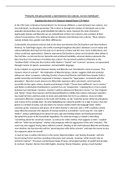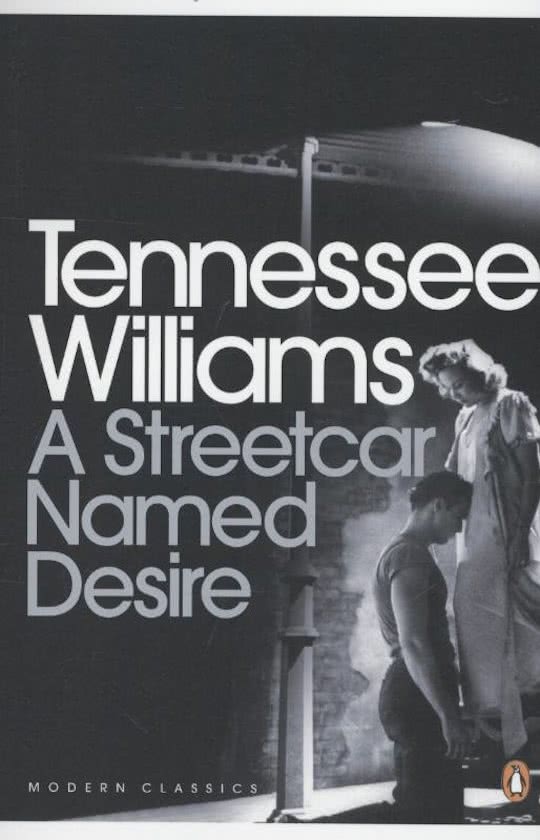“Primarily, this play presents a clash between two cultures, not two individuals”.
Examine this view of A Streetcar Named Desire (25 Marks)
In the 1947 play ‘A Streetcar Named Desire’ by Tennessee Williams, a clash between two cultures, not
two individuals, is primarily presented. This is done so through the median of individuals and so the
opposite interpretation may understandably be taken by some, however the main characters
(particularly Stanley and Blanche) are an embodiment of their own cultures and a product of their
cultural circumstances, thus making the play an ultimate clash between two cultures. These cultures
namely include class, gender and ethnic differences.
Contextually, the greatest cultural clash at the time was between the Old Southern and New Northern
America. As Gabi Reigh argues, the conflict running throughout the play is between a set of values and
cultural attitudes deriving from the past era in America’s history and the new, more multicultural, and
Urban world that superseded it. Blanche represents Old Southern culture and its decline after defeat in
the Civil War, as mirrored by her hamartia and emotional instability, whereas Stanley represents the
New America in his embrace of working-class culture. The perceived snobbery of Blanche as the
‘Southern Belle’ of the play thus clashes with Stanley’s “bestial” and “common” persona, as represented
through manner of speech, possessions, and animalistic language.
Scene 2 depicts an argument between Stanley and Blanche over how Blanche came to possess “The
treasure chest of a pirate!”. The implication of Blanche being a ‘pirate’ suggests theft and unlawful
taking over other’s property, reflecting Stanley’s theory that Blanche sold Belle Reve despite Stella’s
partial ownership and further supported in Stanley’s request for “legal papers. Connected with the
plantation”. Blanche’s trunk seems to be filled with expensive attire and jewels, only financially
accessible by the upper classes, despite proclaiming to Stella “Y'know how indifferent I am to money.”
and Stella’s confirmation that Blanche’s summer furs are “inexpensive,” implying this is in fact a clash
between two individuals. However, Stanley’s satirical addressal of Blanche in Scene 7 as “Her Majesty”
and “Dame” shows how insecure and threatened Blanche’s middle-class culture and power assertion
has made him feel, and thus seeks to mock and undermine her for it as a defence. Irony is further
conveyed in Blanche’s response to her clash with Stanley, as she “snatches up her white hat and gloves
and crosses to the outside door” by only highlighting her material wealth. For a lady to wear a hat and
gloves is a symbol of status, but also there are various clashes within the language itself. ‘white’
connotes purity, innocence and peace, all of which Stanley’s character and a 1940’s audience would
argue Blanche possesses the opposite of having worked as a prostitute “just to pay for- one night’s
shelter”, being a pathological liar about her past, age and drinking habits, and having perceivably
disrupted the peace of the household. Regardless, the ethereal imagery created in describing
“something about her uncertain manner, as well as her white clothes, that suggests a moth,” coupled
with her “white hat and gloves” clashes and juxtaposes with the aggression of the verb ‘snatches’. This
word may also suggest having taken without consent, alluding to the clash between Blanche and Stanley
over whether she had secretly sold the “great big place with white columns” and kept the money to buy
her expensive attire for herself.
A clash of class is subtly referred to in the names ‘Blanche DuBois’ and ‘Stanley Kowalski,’ with the
former being French and thus sounding aristocratic and romantic, meaning “white woods! Like an
orchard in spring!”. This gives a picturesque image of large, extravagant gardens of wealth and prosper.
In contrast, ‘Stanley’ derives from Old English, meaning ‘Stoney Meadow,’ giving a much harsher,





